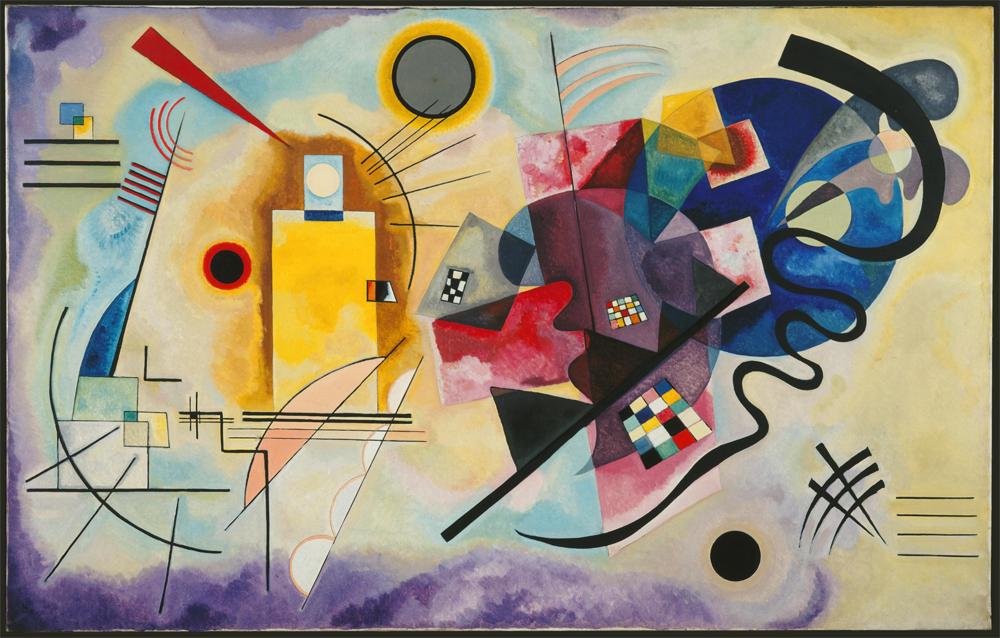Art is as vast as the universe, with influential artists painting its galaxies with innovative techniques.
You’re about to embark on an artistic voyage, exploring 20 of the most influential artists ever gracing our planet.
From the paradigm-shifting ingenuity of Leonardo da Vinci and Michelangelo to the emotion-laden brush strokes of Vincent Van Gogh and the meticulous attention to detail of Jan van Eyck, get ready to be awestruck.
We’ll dive into the surreal world of Pablo Picasso’s Cubism and Salvador Dalí’s dreamscapes before moving on to the modern marvels of Georgia O’Keeffe and Andy Warhol.
This isn’t just an article; it’s a journey through the annals of art history, showcasing the trailblazers who redefined what art could be.
So buckle up; it’s time to delve into the realms of the masters and their game-changing innovations.
Above image: Wassily Kandinsky – Gelb-Rot-Blau, 1925 Centre Pompidou / via Wikimedia Commons
Leonardo da Vinci: Mona Lisa
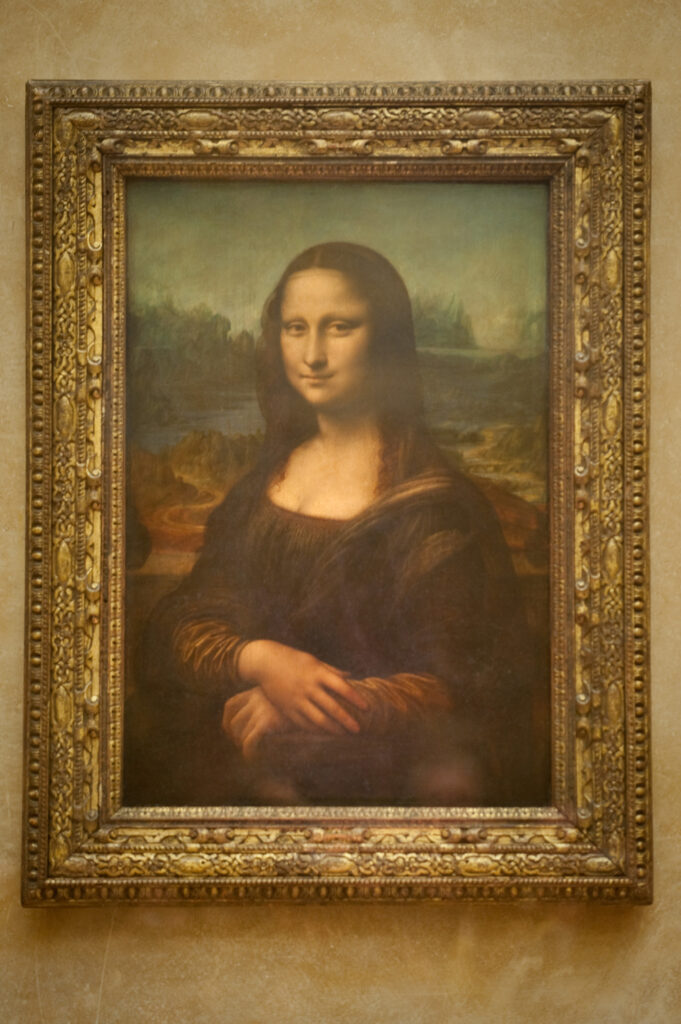
Leonardo da Vinci’s Mona Lisa – The Louvre / by Josh Hallett / via Wikimedia Commons
You’ve likely heard of Leonardo da Vinci’s Mona Lisa, an artwork that’s not only incredibly valuable but also a testament to da Vinci’s groundbreaking techniques and deep understanding of human emotion, which he deftly captured in Mona Lisa’s enigmatic smile.
Da Vinci’s unique style, known as sfumato, allowed him to blend colors without obvious transitions, resulting in a realistic, almost dreamlike depiction. His meticulous attention to detail, seen in Mona Lisa’s intricate veil and clothing, demonstrates his profound study of materials and textures.
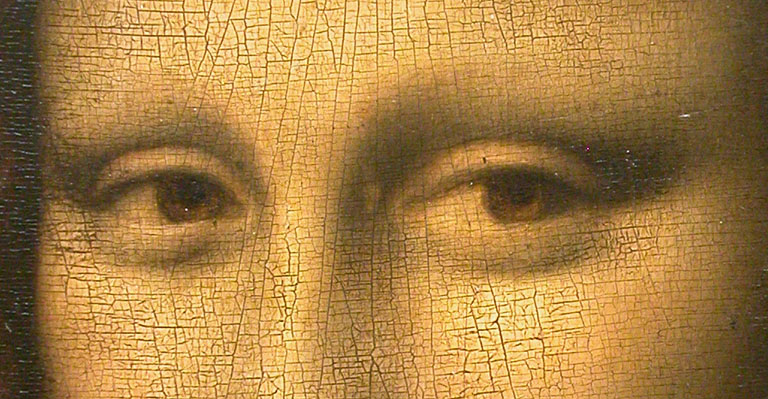
Mona Lisa detail eyes / via Wikimedia Commons
But it’s her eyes that are genuinely captivating, following you no matter where you stand, a haunting effect that’s fascinated viewers for centuries. You can’t ignore that da Vinci was a true innovator who changed how we perceive art.
Vincent Van Gogh: Starry Night
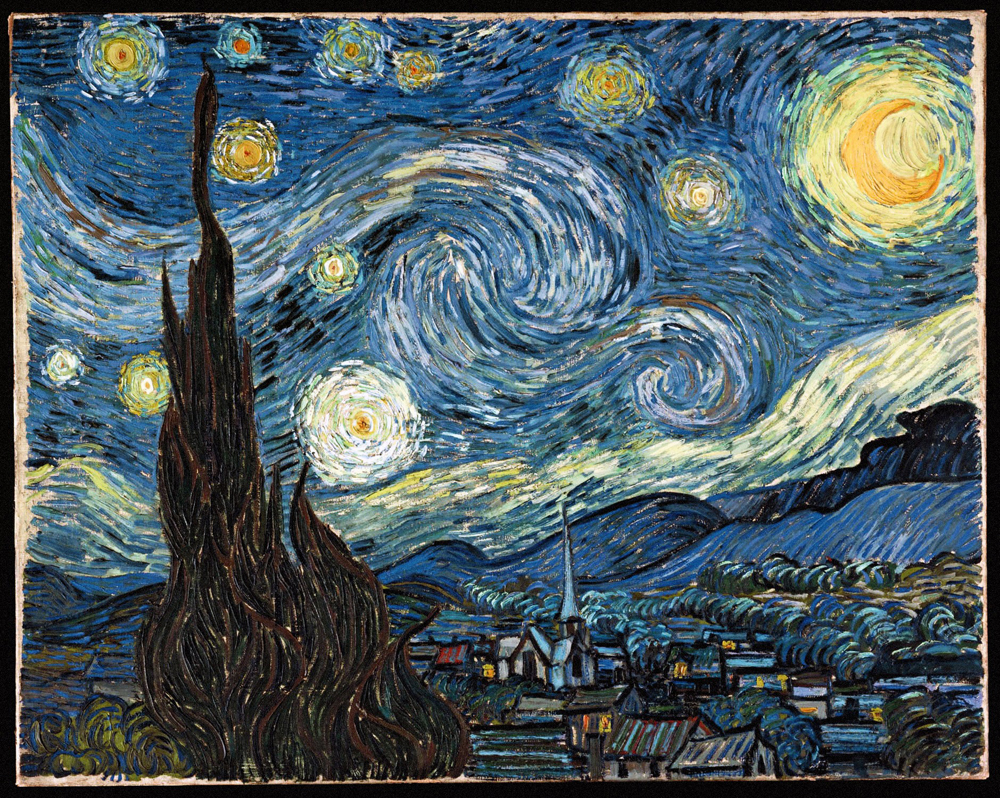
Vincent van Gogh’s Starry Night / via Wikimedia Commons
Did you know that Van Gogh’s iconic Starry Night painting is worth over $100 million?
This masterpiece, loved by many, wasn’t created during a peaceful night under the stars. Instead, Van Gogh painted it while in an asylum, struggling with his mental health.
His technique was unique, using thick, swirling brush strokes to evoke emotion and movement. This method, known as impasto, wasn’t widely used then. Yet, Van Gogh took it to a new level, creating a painting that’s more than just a starry night.
It’s a window into his troubled soul, a testament to his ability to create beauty even in the darkest circumstances. It is a powerful reminder that great art often emerges from great pain.
Pablo Picasso: Cubism
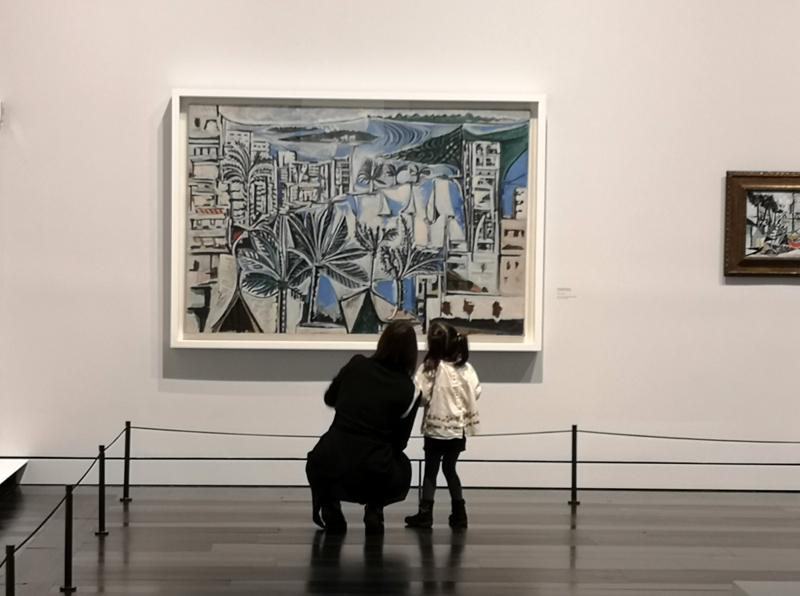
Image credit / Proactive Creative
Picasso’s groundbreaking exploration into Cubism completely flipped the script on traditional perspectives in art. His daring approach dismantled and reassembled objects in abstracted forms, pushing the boundaries of what you might consider ‘recognizable.’
Like Les Demoiselles d’Avignon and Guernica, Picasso’s Cubist works are captivating puzzles of fragmented shapes and altered viewpoints. Imagine viewing a guitar from multiple angles simultaneously. That’s what Picasso’s Cubist paintings feel like. He was audacious, breaking away from perspective and realism, embracing a style entirely his own.
His daring innovation in art technique continues to inspire and influence artists today, making him one of the most transformative figures in modern art. Picasso’s Cubism, quite simply, changed the face of art forever.
Michelangelo: Sistine Chapel
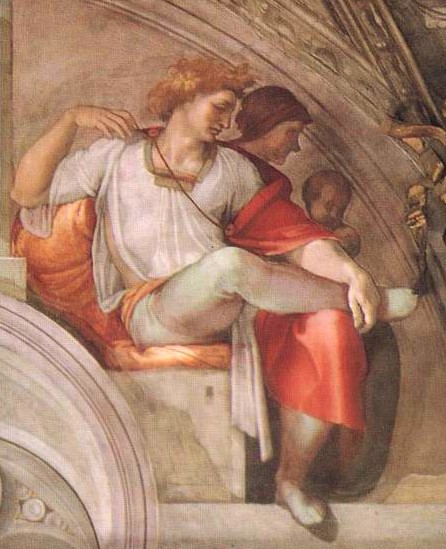
Michelangelo – Sistine Chapel – Mattan and Eleazar – Detail Eleazar / via Wikimedia Commons
Just imagine looking up at Michelangelo’s breathtaking frescoes on the Sistine Chapel ceiling, each brushstroke telling an epic story of creation, temptation, and the divine.
Unlike other artists of his time, Michelangelo used bright, bold colors to bring his characters to life. His innovation wasn’t just about his color choices but his technique of ‘buon fresco,’ painting on wet plaster to create a durable, vivid image. He’d meticulously plan each scene, sketching figures and arranging them into a coherent composition before transferring them onto the ceiling. He’d work in sections, painting each one before it dried.
This grueling, painstaking process took him four years to complete, resulting in one of the most iconic masterpieces in art history.
Raphael: Renaissance art
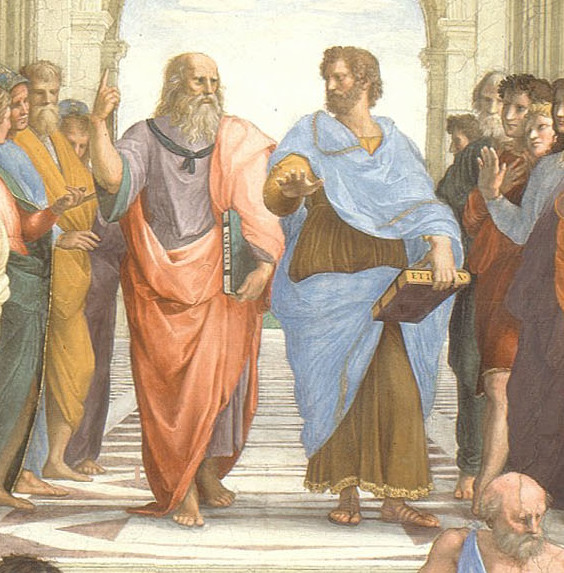
“The School of Athens” by Raffaello Sanzio da Urbino (cropped) / via Wikimedia Commons
Raphael’s mastery of Renaissance art is undeniably breathtaking, with his meticulously detailed compositions and unparalleled use of color and light. He’s considered one of the greatest painters of this period, and his work is a testament to his incredible skill and innovative technique.
Raphael’s art often depicts religious scenes, filled with a sense of serenity and balance that’s truly remarkable. His innovative use of perspective and attention to detail sets his work apart. Look at his iconic Sistine Madonna or his series of frescoes in the Vatican Palace, and you’ll see his genius shining through.
Raphael’s contributions to art didn’t just stop at painting. He also significantly influenced architecture, contributing greatly to the development and popularization of the High Renaissance architectural style.
Claude Monet: Impressionism
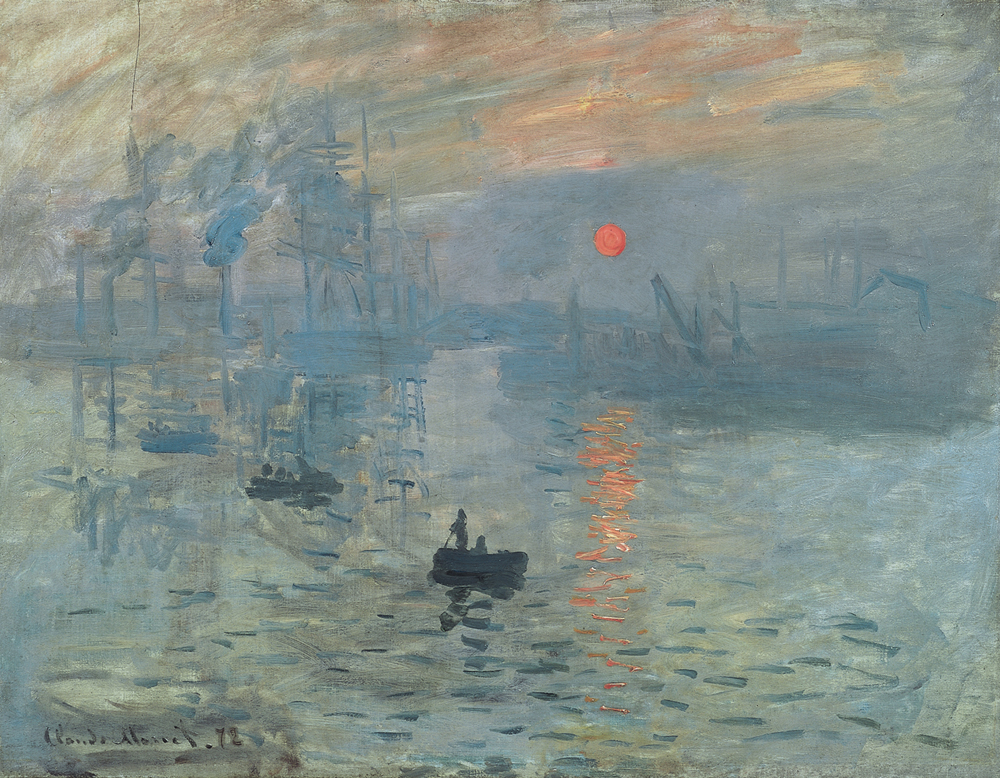
Claude Monet, Impression, soleil levant / via Wikimedia Commons
After exploring the religious and mythological excellence of Raphael’s Renaissance art, let’s dive into the world of Claude Monet, the underrated genius of Impressionism.
Monet’s commitment to capturing the fleeting effects of light and color transformed the art world. He didn’t just paint what he saw but how he saw it. He would paint the same scene at different times of the day to capture changing light and weather conditions. His painting technique quickly, with small brushstrokes, created a sense of movement and vibrancy in his work.
His iconic ‘Water Lilies’ series is a testament to his innovative techniques. Monet’s dedication and unique approach pushed the boundaries of traditional art, paving the way for modern art movements. He’s truly a beacon of Impressionism.
Sandro Botticelli: Medici Family
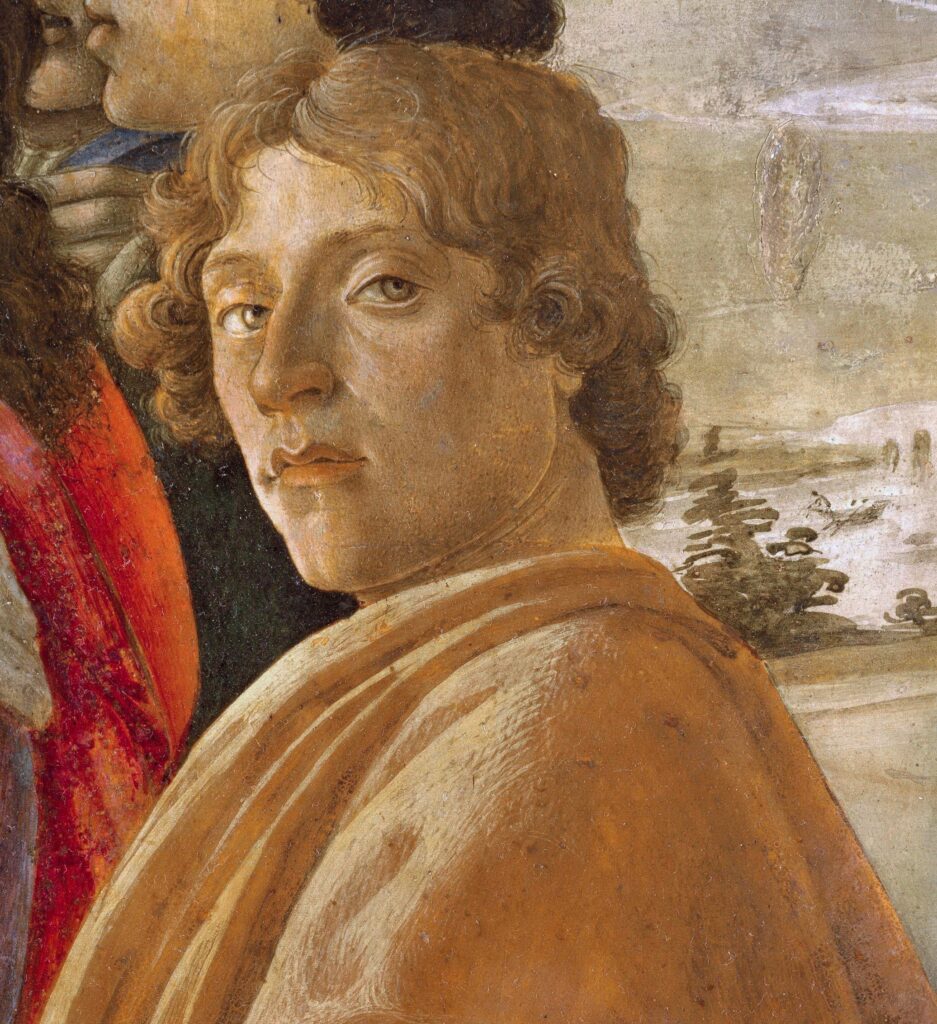
Sandro Botticelli / via Wikimedia Commons
Now, you’re about to become spellbound by the magic of Sandro Botticelli’s work, the Renaissance mastermind whom the powerful Medici Family heavily patronized. His divine depictions of religious and mythological scenes, like the ‘Birth of Venus’ and ‘Primavera,’ are so breathtakingly beautiful and meticulously crafted you’d swear they were spun from celestial stardust rather than mere paint and canvas.
You’ll notice Botticelli’s unique style; his figures are elegant, with an elongated neck and slender body, depicting the ideal beauty of his time. His eye for detail and symbolism were groundbreaking, a testament to his genius. Yes, Botticelli was a true innovator; his work was an enchanting blend of reality and mythology, a vivid representation of the humanistic spirit of the Renaissance.
Salvador Dalí: Surrealism
Moving on from the religious and mythological influences of Sandro Botticelli, we find ourselves in the world of Salvador Dalí, the master of Surrealism. Dalí’s art is like a journey into a dream, where the subconscious mind rules supreme. He’d take everyday objects and twist them into bizarre, dreamlike forms. You’ve probably seen his melting clocks in ‘The Persistence of Memory,’ an iconic example of his innovative techniques.
Dalí’s art is a visual feast, filled with double images and optical illusions that make you question reality. He’d use high detail and sharp contrasts to create a sense of eerie realism in his fantastical scenes. With Dalí, you’re not just observing art; you’re experiencing a mind-bending subconscious exploration.
Rembrandt: Dutch Golden Age
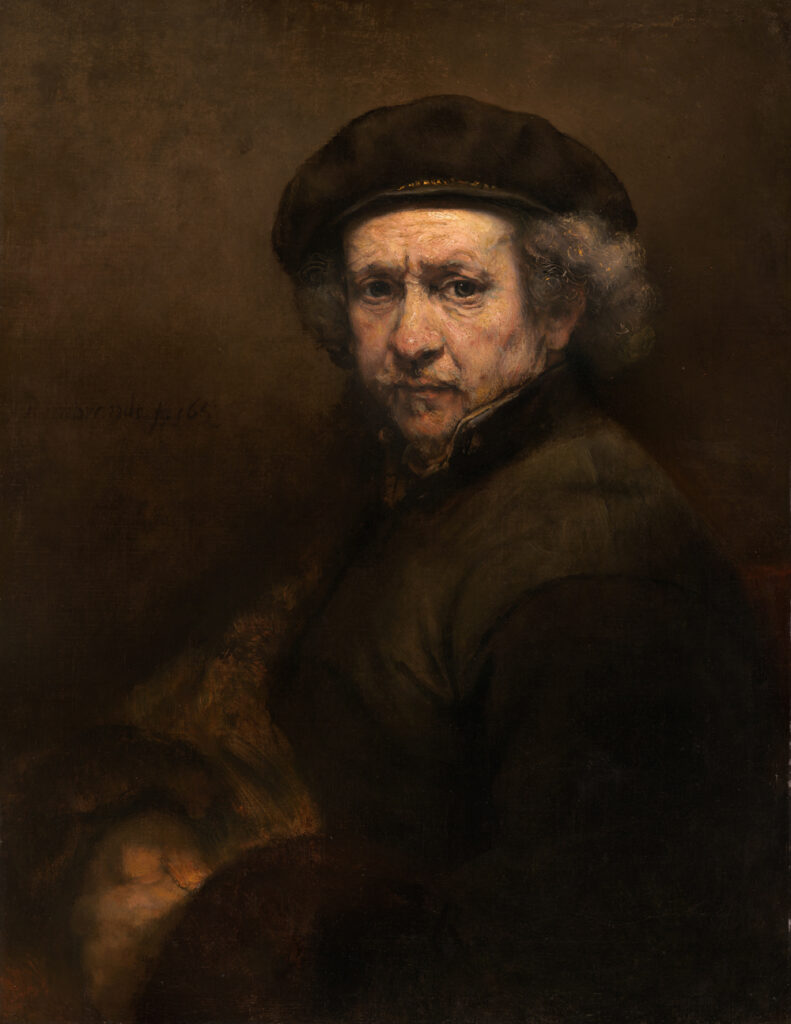
Rembrandt van Rijn – Self-Portrait – Google Art Project / via Wikimedia Commons
Stepping into the world of Rembrandt, you’re greeted by the stark reality of life during the Dutch Golden Age. Each painting tells a story that tugs at your heartstrings. You’ll soon notice Rembrandt’s knack for capturing thought-provoking moments. His work is rich, not just in color but in raw emotion. You can’t help but be drawn to his realistic portrayals, like that of The Storm on the Sea of Galilee.
Rembrandt’s technique was groundbreaking. He employed chiaroscuro, a dramatic use of light and shadow, bringing depth and dimension to his subjects. He didn’t just paint people; he captured their souls, making you feel their joy, sorrow, and humanity.
Rembrandt’s art is a testament to his genius and a gift to the art world.
Frida Kahlo: Personal artworks
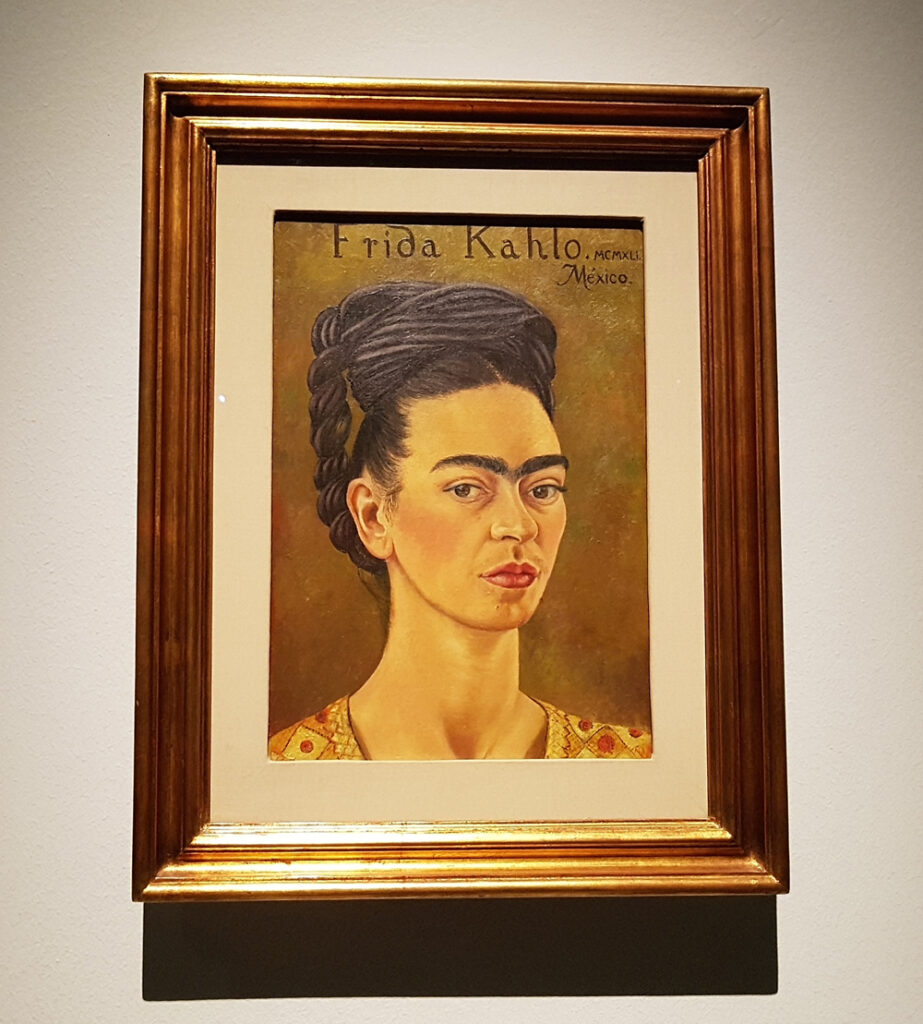
Frida Kahlo, Self Portrait 1941; Ambra75 / via Wikimedia Commons
From the Dutch Golden Age’s realism of Rembrandt, let’s shift continents and centuries to 20th-century Mexico.
Here, we find Frida Kahlo, an artist whose work was deeply personal and profoundly influential. Kahlo’s art, much like her life, was filled with pain and struggle. Yet, she transformed her experiences into powerful imagery that still captivates audiences today.
Often criticized for her political views, Kahlo’s work was nonetheless groundbreaking, particularly in Latin America. Kahlo directly influenced many Mexican paintings that garnered European attention or bore her unmistakable imprint.
Despite her life’s turmoil, Kahlo’s contributions to art are undeniable. Her unique style and emotional depth continue to inspire artists and art lovers worldwide.
Renoir: French impressionism
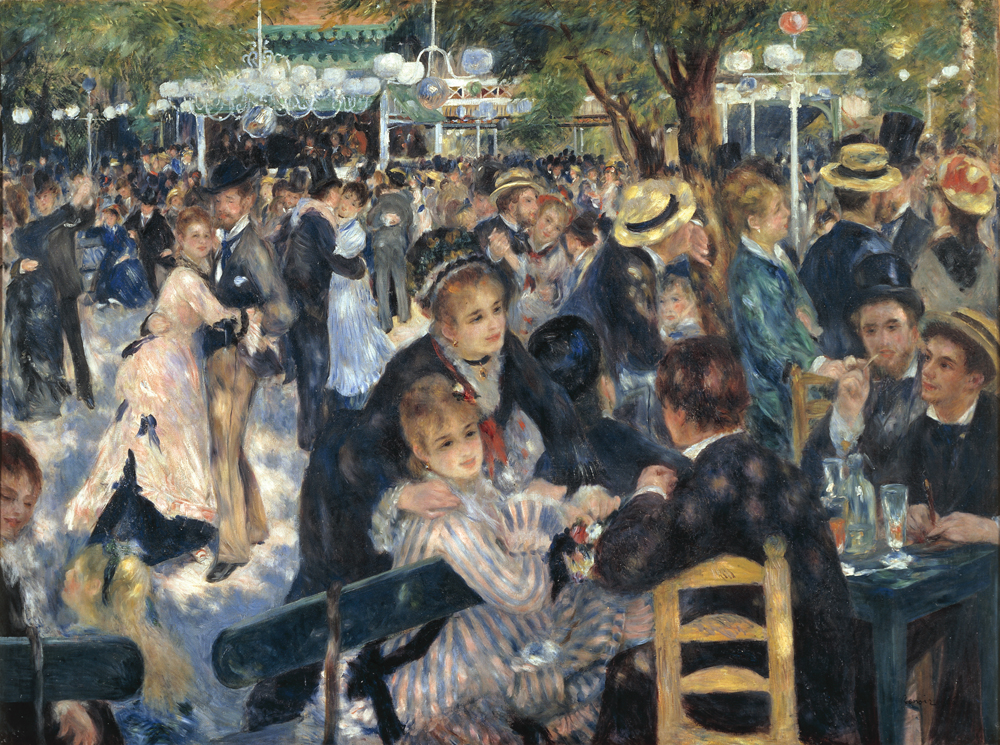
Pierre-Auguste Renoir, Le Moulin de la Galette / via Wikimedia Commons
Isn’t it fascinating how art can capture the essence of life? That’s precisely what Renoir accomplished with his French impressionism. He painted scenes filled with emotion and activity, such as the iconic Luncheon of the Boating Party. His style was unique and bold, focusing on the beauty of everyday life.
His loved ones and the great outdoors were often the stars of his works. You could feel the emotions evoked by his subjects, whether they were blissfully enjoying a sunny afternoon or deeply engrossed in their tasks. Renoir’s free and expressive brushstrokes added a dynamic touch to his paintings, making them seem alive. Despite the passage of time, Renoir’s works continue to inspire, reminding us to appreciate life’s simple pleasures.
Johannes Vermeer: Realistic details
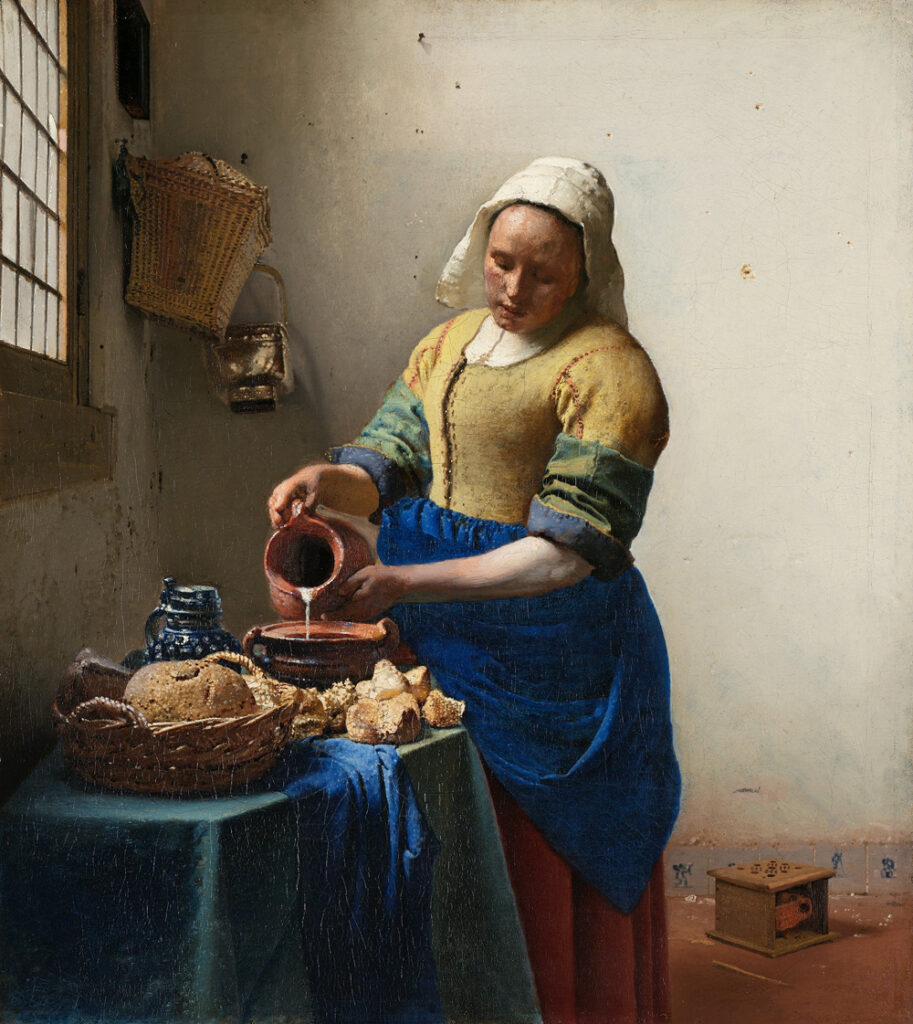
Johannes Vermeer – Het melkmeisje – The Milkmaid / via Wikimedia Commons
You’ve undoubtedly heard of Johannes Vermeer, the 17th-century artist who brought everyday life to the canvas with a level of detail that’s nothing short of breathtaking. His works capture the essence of domesticity with a unique realism that’s hard to match.
Each piece is a snapshot of a moment frozen and preserved for the viewer’s enjoyment. Vermeer’s subjects are often women engaged in ordinary tasks, yet they’re depicted with dignity and grace as extraordinary. His use of light and color to create depth and form is innovative.
Even the textures in his paintings are realistic, giving you the feeling that you could reach out and touch the objects. This is the magic of Vermeer, making the mundane seem anything but.
Paul Cezanne: Bridge between Impressionism and Cubism
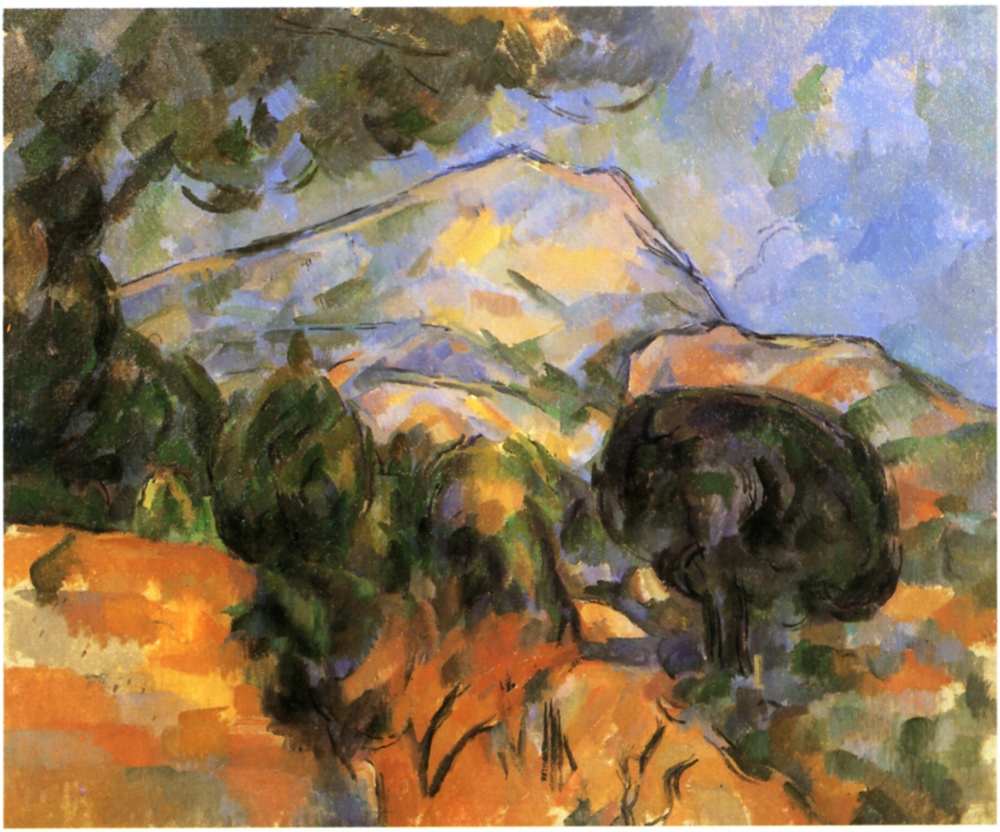
Paul Cezanne mont Sainte Victoire, Sebastian Nizan, United States public domain / via Wikimedia Commos
Paul Cezanne is often credited as the bridge between late 19th-century Impressionism and the early 20th century’s new line of artistic inquiry, Cubism.
Strikingly, out of his approximately 900 paintings, nearly 200 were still lifes, a testament to his mastery of capturing geometric planes and shapes.
Cezanne’s dedication to his craft, despite facing rejection, was truly commendable. He was a determined artist who didn’t let the world’s opinions deter him from his vision.
His innovative approach to painting, using small, repetitive brushstrokes to build form, was a significant departure from the traditional methods of the time.
This dedication to exploring form and color laid the groundwork for Cubism’s development, revolutionizing the art world.
Gustav Klimt: Art Nouveau style
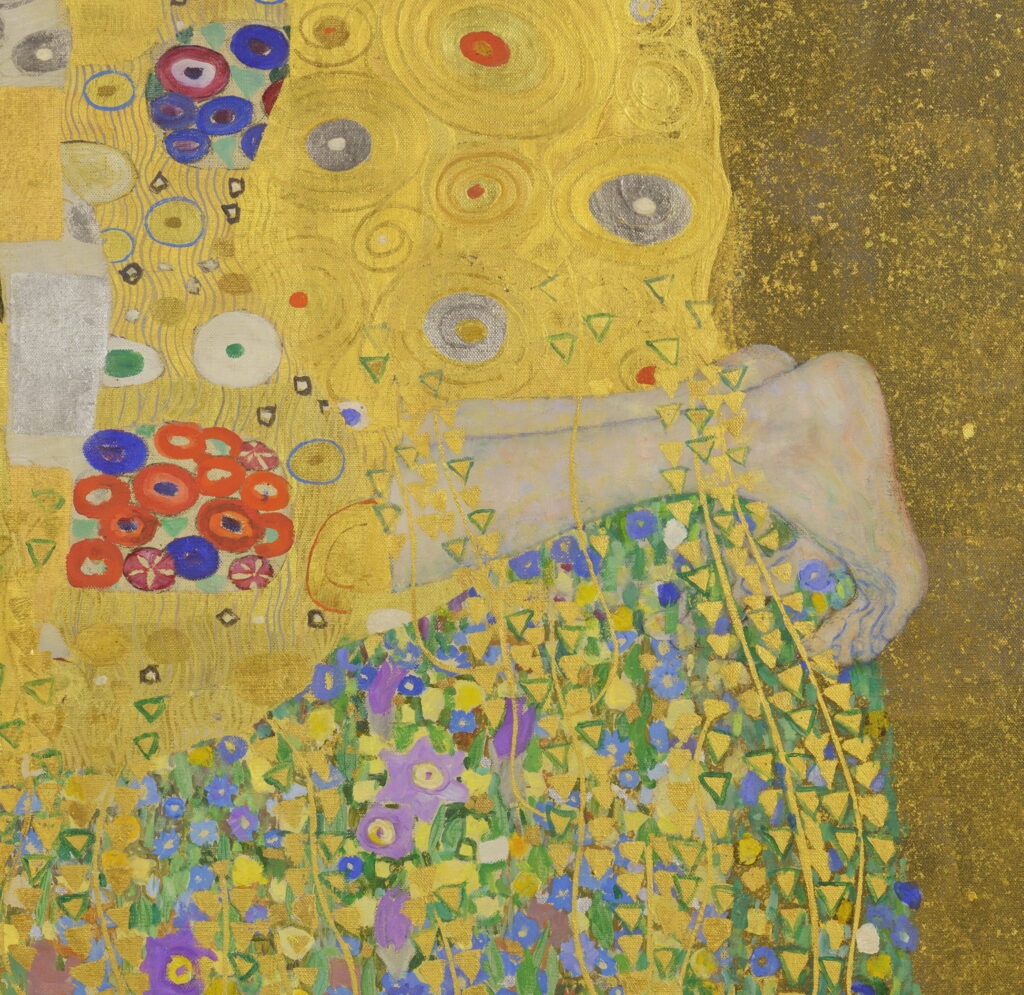
Klimt – The Kiss (detail) / via Wikimedia Commons
So, you’ve just explored how Paul Cezanne’s innovative work bridged the gap between Impressionism and Cubism.
Now, let’s glide over to Vienna and dive into the world of Gustav Klimt, a pillar of the Art Nouveau style. His intricate artwork, often featuring gold leaf and religious themes, is nothing short of mesmerizing.
Klimt’s reputation grew with his distinct style that blurred the line between fine and decorative art. His murals and oil paintings, like the famed ‘The Kiss,’ are celebrated for their lavish details and symbolic narratives.
Klimt dared to push the boundaries of tradition, unafraid of controversy. His innovative use of pattern and composition inspires artists today, firmly cementing him as an enduring figure in art history.
Caravaggio: Baroque art
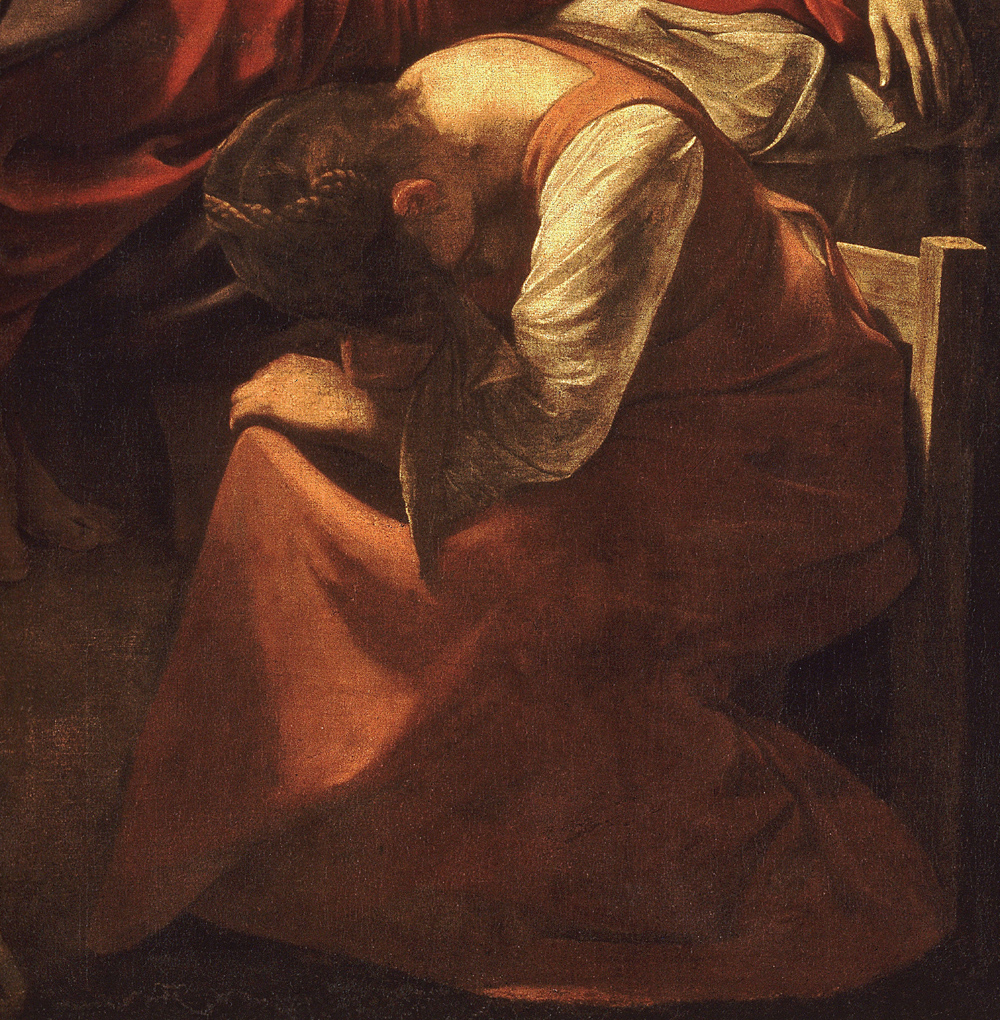
Death of the Virgin-Caravaggio (1606) (focus on Magdalena) / via Wikimedia Commons
Next up on our artful journey is Caravaggio, the maestro of Baroque art. His dramatic use of light and shadow created a theatrical intensity in his paintings. You’ll be amazed at how he made his figures seem to pop out from the darkness, a technique known as ‘chiaroscuro’. This was Caravaggio’s signature style, giving depth and realism to scenes of everyday life or biblical narratives.
His characters weren’t idealized; they were real people in real situations. But don’t let the dark tones fool you — Caravaggio’s work was full of passion and emotion. His style was controversial but also revolutionized painting, influencing generations of artists. You can’t deny that Caravaggio’s innovative techniques truly shaped the Baroque period.
Wassily Kandinsky: Abstract and expressionist works
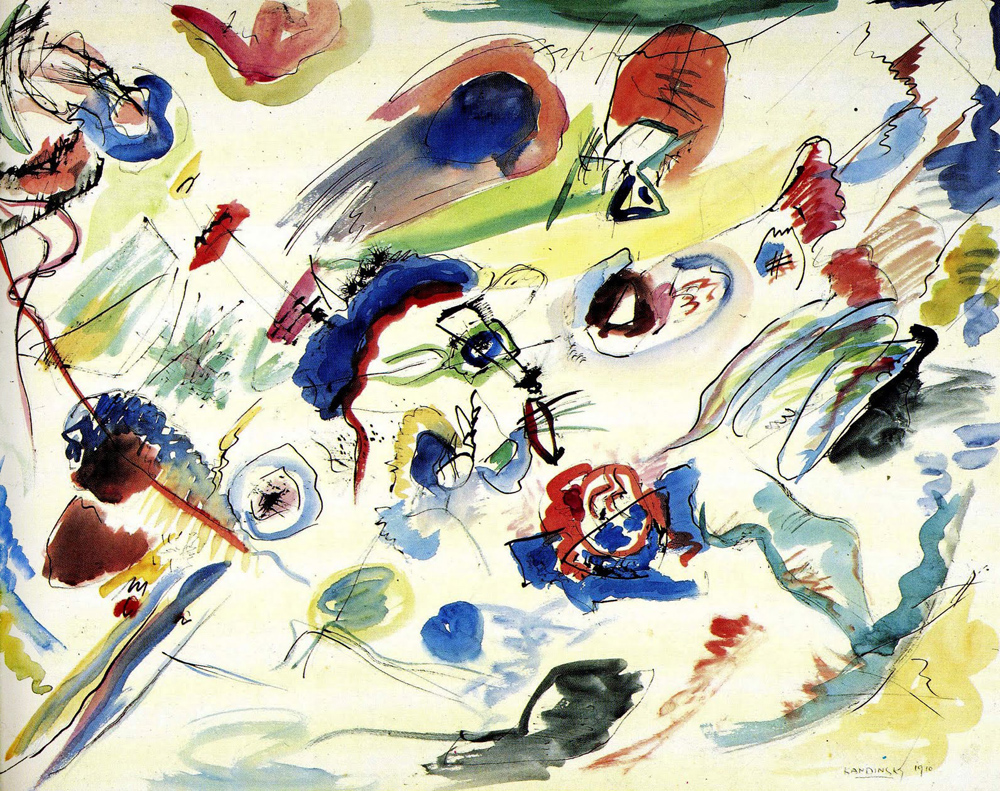
Untitled First Abstract Watercolor, 1910 by Wassily Kandinsky / via Wikimedia Commons
Moving on from Caravaggio’s striking Baroque art, let’s delve into the mesmerizing world of Wassily Kandinsky, a disciplined and passionate artist. Kandinsky’s abstract and expressionist pieces are a true delight for art enthusiasts. Claude Monet’s paintings ignited his love for art, which inspired him to experiment with different colors.
Kandinsky didn’t just paint; he played with hues and tones, creating a symphony on canvas. Each piece is a testament to his skill in manipulating geometric shapes and color theory. His work allows you to experience art in a whole new light.
So, immerse yourself in Kandinsky’s abstract world. Let his art challenge your perception and invite you to see the beauty in the chaos.
Jan van Eyck: Incredibly detailed artwork
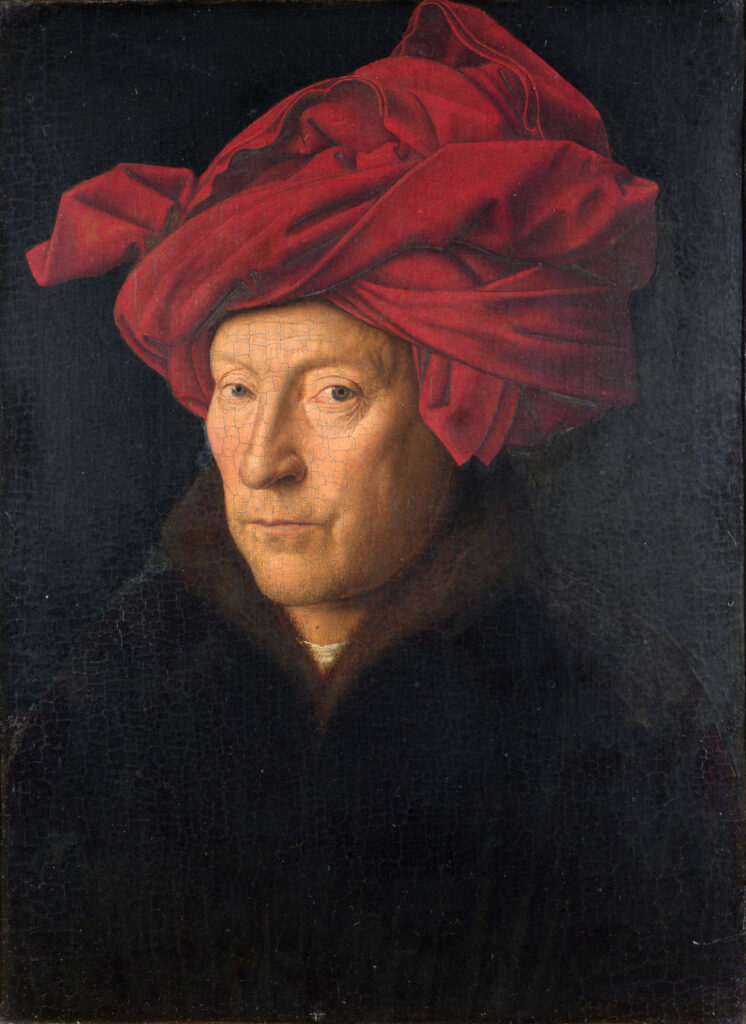
Jan van Eyck’s ” Portrait of a Man (Self Portrait?)”, also known as Portrait of a Man in a Turban (1433). National Gallery, London / via Wikimedia Commons
Diving deeper into the realms of art, we encounter Jan van Eyck, a Belgian painter known for his incredibly detailed and mysterious artworks. You might think Eyck’s contribution to art is insignificant, with only 20 paintings.
However, each of his works, framed and mounted on walls like authentic images, offers an extraordinary level of detail that invites viewers to immerse themselves in the minutiae of the piece, revealing a depth and complexity that transcends the physical limitations of the canvas. Eyck’s technique was groundbreaking; his intricate brushwork unprecedentedly brought each scene to life.
His paintings become almost like a puzzle, challenging you to unlock the secrets hidden within each one. His influence on art is undeniable, his detailed approach paving the way for future generations of artists.
Georgia O’Keeffe: Mid-20th century modern art
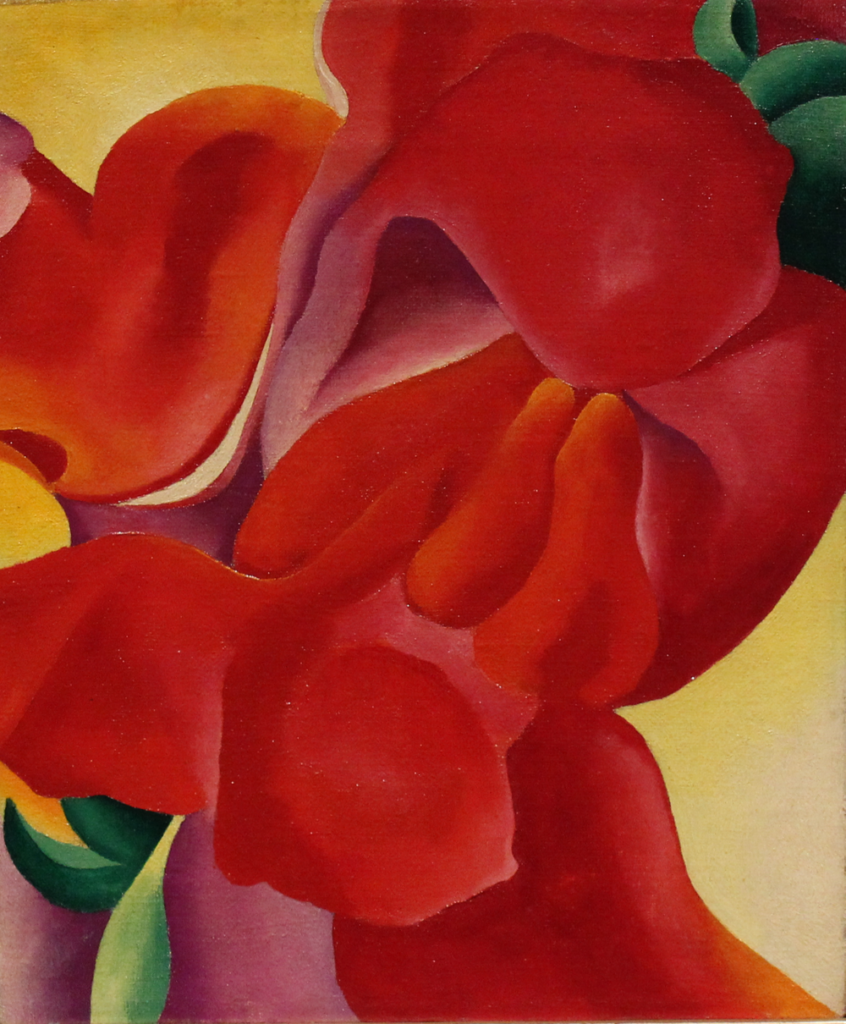
Red Canna (1923) by Georgia O’Keefe / via Wikimedia Commons
Shifting from the detailed and mysterious artworks of Jan van Eyck, let’s traverse time and continents to mid-20th century America.
Here, we meet Georgia O’Keeffe, a seminal figure in modern art. She didn’t just paint; she breathed life into her canvases, capturing the vibrancy and spirit of the American West with abstract notions. You can’t help but admire her tenacity pursuing her art amidst war and instability.
Her work was abstract, yet it spoke volumes, redefining Western American art. O’Keeffe’s paintings weren’t simply pretty pictures; they were visual narratives, each stroke a word, each artwork a poem. Her technique, her vision, her passion—it’s all there on the canvas, a testament to her indomitable spirit.
Andy Warhol: Real-life inspirations
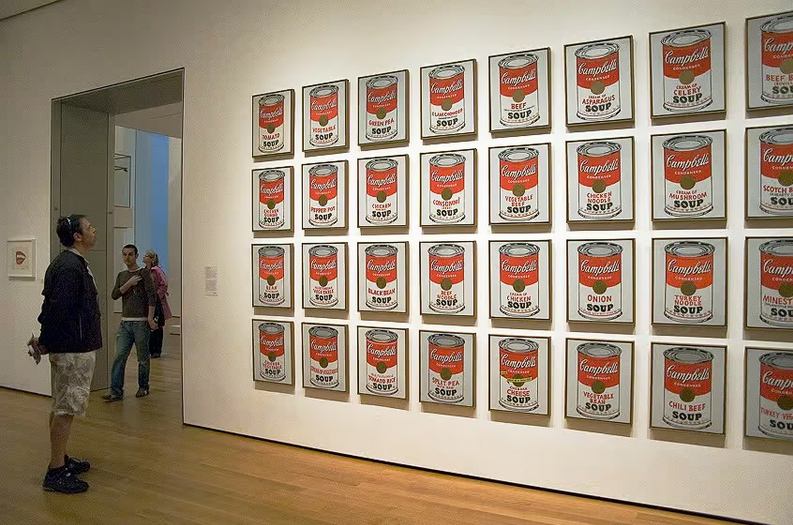
Campbell’s Soup Cans (1962) by Andy Warhol, located at the Museum of Modern Art in New York City, United States; Gorup de Besanez, CC BY-SA 4.0, via Wikimedia Commons
Imagine stepping into a world where everyday objects become vibrant art, where soup cans and celebrities are immortalized in bold, bright colors – welcome to the world of Andy Warhol.
Warhol’s art is a blend of pop culture and personal vision. It pushes boundaries and redefines modern art. His innovative screen printing allows him to replicate images, often with slight variations. This creates a visual commentary on mass production and consumer culture.
You’ve likely seen his iconic Marilyn Monroe and Campbell’s Soup Cans series. But his work is more than just art; it is a reflection of the times, a mirror held up to society.
Warhol’s art doesn’t shy away from real-life inspirations; instead, he embraces them, turning the ordinary into extraordinary.
Edvard Munch: Symbolism in art
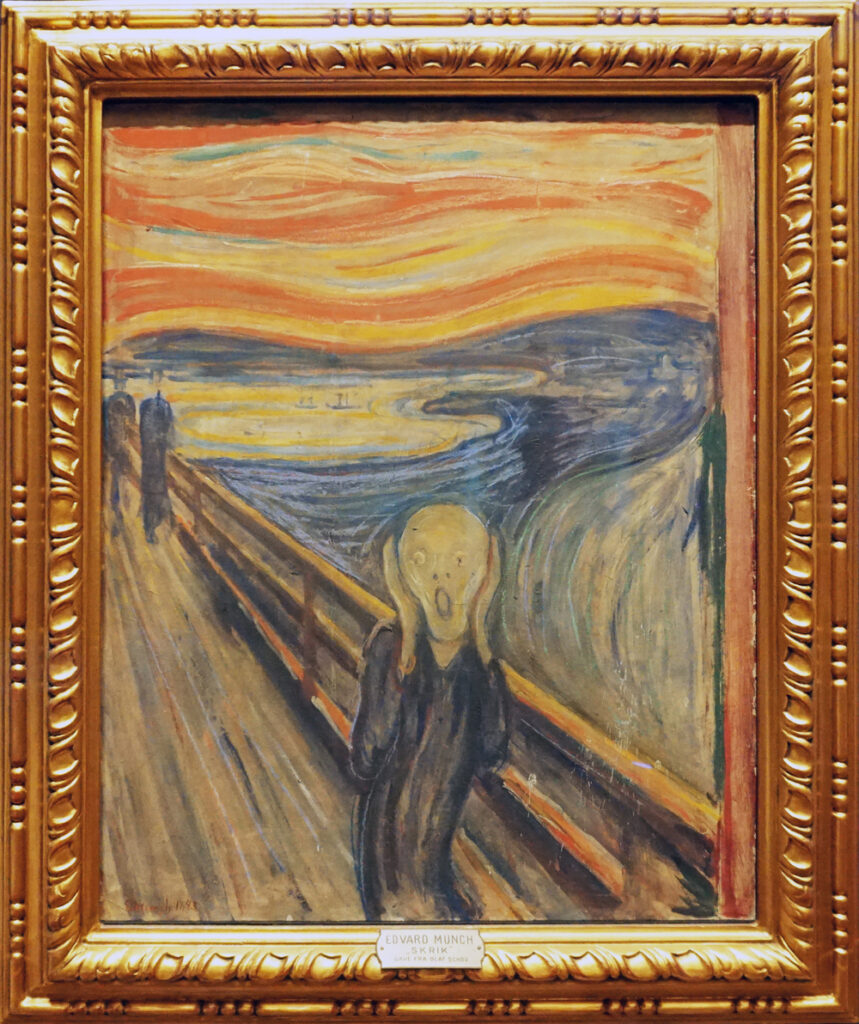
The Scream by Edvard Munch (1893), Nasjonalgalleriet, Oslo / via Wikimedia Commons
Edvard Munch’s work, steeped in symbolism and emotion, gives us a haunting and profound exploration of human experience. You’ll notice his use of darker colors, contrasting lines, and somber tones. They’re not just aesthetic choices but intentional elements that evoke deep emotional responses.
His infamous ‘The Scream’ isn’t just a painting; it’s a symbol of existential dread. Munch didn’t shy away from displaying his own horrifying experiences. His knowledge of human behavior and his childhood traumas became his muse. He employed symbolism to reflect these experiences, creating innovative art that resonated with many.
So, the next time you look at Munch’s work, remember that you’re not just looking at a painting. You’re peering into the depths of human emotion and experience.
Follow us on Pinterest for more tips, tutorials, and artist reviews!

